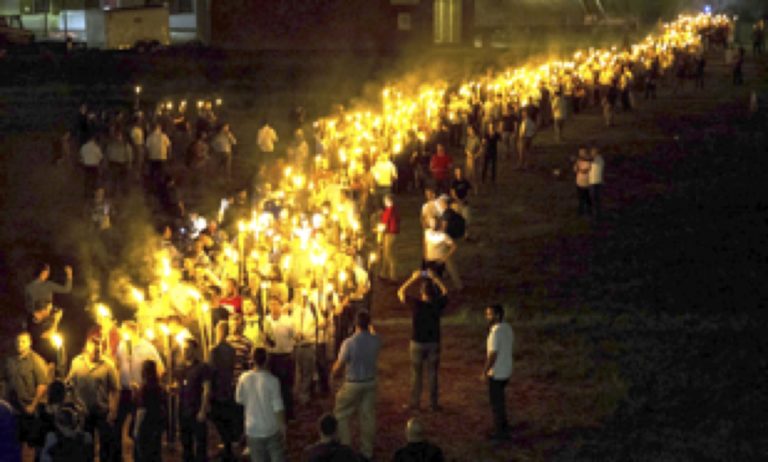Moral Imperative vs. Moral Equivalency as a “Religious” Inquiry
A Commentary in the Aftermath of Recent Acts of Violence, Domestic Terrorism & Yet Another Culture War

You can read and/or print a pdf version Here.
“The hottest places in hell are reserved for those who, in times of great moral
crisis, maintain their neutrality.” – Danté (1265-1321)
Not long ago, I received a group email message from an acquaintance. A devout Muslim, he’d written to his circle of friends to tell us he was leaving the country in a few days to undertake a pilgrimage known as the Hajj. The purpose of Ejaz’ message – and as part of his required preparations for his pilgrimage — was to ask forgiveness for any wrong he may have intentionally or unintentionally committed with anyone in his circle of friends and acquaintances.
Ejaz and I do not share the same religious tradition; nor – if we did – I suspect we may well not find ourselves in the same place at this point along our separate theological or scriptural paths of inquiry. But I understand and share the meaningful value to be found in the practice of this kind of penitential ritual and the humility required. So I replied briefly, assuring him there was no estrangement between us, as far as I knew; and that I wished him a safe journey and a meaningful experience.

About the same time I received the note from my Muslim friend, I could not help but think of those other images that were concurrently being shown in daily news cycle at the time; depicting another throng of strong believers marching together to express common purpose; this time in in Charlottesville, Virginia.

But to be clear, hatred has only one “side.” As the present occupant of the White House likes to put it, “Believe me. You know it. I know it.” And Donald Trump ought to know it. There is no moral equivalency when it comes to denouncing and “hating” hatred. But there is a moral imperative to say so. And, to do so requires a pilgrimage and passage, of sorts.
There is no moral equivalency when it comes to denouncing and “hating” hatred. But there is a moral imperative to say so. And, to do so requires a pilgrimage and passage, of sorts.
The common thread to any such pilgrimage lies in the human experience of moving from the place of a former past that one has spiritually outgrown – so to speak – to a transformative place of becoming something else, something more.
It is about the act of praxis, of doing, what one presumes to believe will be life affirming; and subsequently life giving. In just such an exchange, it becomes the reciprocal act of giving and receiving. It is about saying “yes” to an imperative that originates from – and is driven by – a mode of conduct that stems from a codified set of beliefs.
In doing so, one is unequivocally and unavoidable compelled to define one’s conduct as either moral or immoral; as the outward expression of one’s belief structure. It is the “moral imperative” that requires such “passage.” In this sense, there cannot be any equivalency between the two. To accord equivalency to what one considers immoral (i.e. contrary to one’s mores) is anathema to one’s very being. A moral imperative expresses one’s highest values. And, in so doing, those greatest values are deemed “sacred.”
Only a few weeks after the act of domestic terrorism in Charlottesville – and only a few weeks before another throng of citizens that had gathered for a music festival in Las Vegas were gunned down by another domestic terrorist – a controversy erupted over professional athletes refusing to stand for the national anthem. “Taking a knee” instead — as an expression of protest over our country’s racial wrongdoings that have yet to be left to a former past — was condemned by some as disrespect for flag and country.

In addition, later, the same site was used as a military prison for Confederate soldiers and political sympathizers during our own civil war over state’s rights to perpetuate slavery.
And finally, is it just me, or doesn’t the gesture of “taking a knee” look an awful lot like the act of genuflection to something deserving greater reverence?
So, what makes a patch of earth, or a temple, sanctuary, shrine, statue or even a flag and national anthem sacred, if not for the designation of it as such by the imagination of the human spirit to conceive of a hoped-for future than a former, would-be past?
Would not the answer to such a question elude us, if not for the moral imperative to act?
So, what makes a patch of earth, or a temple, sanctuary, shrine, statue or even a flag and national anthem sacred, if not for the designation of it as such by the imagination of the human spirit to conceive of a hoped-for future than a former, would-be past?
© 2017 by John William Bennison, Rel.D. All rights reserved.
This article should only be used or reproduced with proper credit.
More Words & Ways commentaries by John Bennison can be found here.

